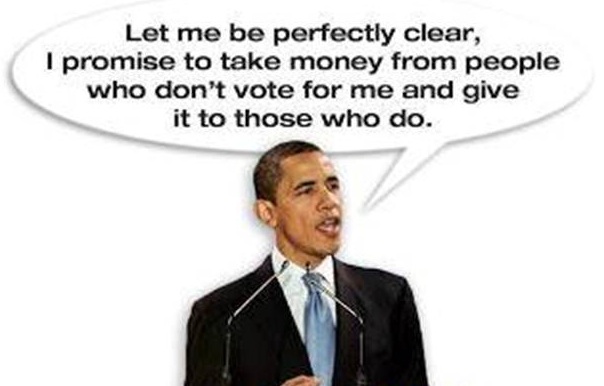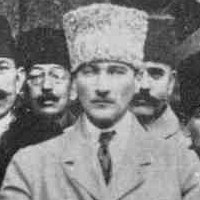![]()
RubinReports | By Barry Rubin
Ironically, those opposing the current hegemonic ideas and political forces in the United States and Europe must develop a Marxist-style analysis of what has happened. To call the current dominant ideas and political currents socialist, Marxist, Communist, leftist, progressive, or liberal is not meaningful and conceals a great deal. The movement must be understood on its own terms and on how it differs from its predecessors.
The problem of revolutionary movements has been to find a group to be the motive force in fundamentally transforming society. Next, they must analyze which groups can be made into allies and those that must be defeated.
The Marxist Analysis of the Social Battle
Marx and his followers identified the industrial working class as that revolutionary force. Here’s how the idea appears in the 1848 “Communist Manifesto”:
“Society as a whole is more and more splitting up into two great hostile camps, into two great classes directly facing each other — Bourgeoisie and Proletariat.”
Marxists posited that the workers’ condition would worsen and that no reform could improve their situation, forcing them to become revolutionaries. Their main ally would be the lower middle class, wiped out by big business and new technology:
“The lower strata of the middle class — the small tradespeople, shopkeepers and retired tradesmen generally, the handicraftsmen and peasants — all these sink gradually into the proletariat….”
In contrast, who are the revolution’s enemies? Capitalists, clergy, and those elements that benefit from capitalism. And along with them:
“The ‘dangerous class,’ [lumpenproletariat] the social scum, that passively rotting mass thrown off by the lowest layers of the old society, may, here and there, be swept into the movement by a proletarian revolution; its conditions of life, however, prepare it far more for the part of a bribed tool of reactionary intrigue.”
Note that in many ways the post-Marxist left reverses this analysis. The lumpenproletariat becomes its ally along with those — many of them prosperous — who benefit from the government’s management of capitalism. In contrast, Marx’s description of the revolutionary forces sounds more like a description of Tea Party members.
Why Marxism Failed
This is a complex subject but given limited time here are some key points:
— Capitalism didn’t decline but advanced, raising living standards across the board. So Marx was wrong about capitalism. Rather than a generalized misery (think of late nineteenth-century London), the “victims” are mostly the 10 to 20 percent left behind. And even these people receive welfare and other benefits beyond the wildest dreams of the poor in every other country and every historical era in the world.
— The working class prospered, preferring material betterment rather than a transformation of society. So Marx was wrong about the proletariat, especially in the United States. What’s important to remember is not that this group struggled to improve its life and working conditions but that it succeeded.
— This adjustment of society to solve these problems was due to many forces. One was improved technology and methods of organization, created by the capitalist system. Another was reforms, usually brought by liberal and social democratic parties and the institution of trade unions.
— The workers were responsive — at time more than the elites — to the appeals of religion, patriotism, and traditional culture.
— Communist regimes failed miserably.
— Minority groups and women improved their status often — in contrast to Marx’s conception — with massive support from the society as a whole. Dramatic changes took place in relatively short periods. When Michelle Obama said she was ashamed of her country she blotted out everything from the Civil War to federal support for the civil rights movement, to huge changes of attitude on the part of Americans. Note that a problem of the post-Marxist left is to erase all of this good will and progress in order to stir up grievances and hatred.
The Post-Marxist Left’s New Analysis
Gradually, Communists understood that things weren’t developing as predicted. There were many attempts to adjust, ranging from Vladimir Lenin’s theory of imperialism through such thinkers as Antonio Gramsci, Georg Lukacs, the Frankfurt School, Third World oriented interpretations like that Andre Gunder Frank (whose book Hugo Chavez gave to Obama), Saul Alinsky, and the 1960s’ New Left. One of the most important new left strategists from the 1960s, Carl Davidson, headed the Progressives for Obama group in the 2008 election. Bill Ayers pioneered on using education for indoctrination.
The new approach argued that the proletariat and lower middle class had largely “sold out” and was now the enemy, clinging to guns, religion, and hatred of those different from themselves. This treason was related to racist and imperialist privilege. Swollen with imperialist and “white-skin” privilege, the United States was the cancer of the world. America was evil and Americans were the enemy, a stance quite different from that of earlier left movements.
So what was the revolutionary strategy to be? The most important basic principle is that the left must, in effect, wear a burqa, concealing its true nature and goals, pretending to be liberal or — stealing an old liberal reformist term also used by the Communists — progressive. This is purely opportunistic, a descendant of the 1940s’ Communist Party slogan claiming that “Communism is twentieth-century Americanism.” In the current incarnation, left-wing radicalism is said to be twenty-first century liberalism. Millions of Americans accept these ideas with no idea of their origin or goals.
Second, rather than struggling to weaken the capitalist state to overthrow it, the strategy was to work “within the system” to seize control of the state apparatus in order to transform the society. Thus, the state is to be strengthened as a tool for transforming society rather than defeated.
Such a tactic, called “entryism,” is by no means new. Historically, however, Communist forces ruined the effect by turning captured organizations into “front” organizations that too obviously followed the party line. They also lacked sufficient cadre to take over major institutions and faced strong, conscious opposition. Now, however, the New New Left had lots of cadre, money, and flexibility while opposition was disorganized and unaware of what was happening. Victory was astonishingly easy.
Third, structural changes in capitalism also indicated the best strategy. These included a “new working class” of experts and technicians along with the tilt toward managerial power over ownership best foreseen by James Burnham. These people, along with the children of the wealthy and capitalist, could be recruited to support the movement through educational indoctrination and perceived self-interest. Believing in efficient, “intelligent” management they would be inclined to think that the government would be the best agency to run things rather than the market.
Ironically, as a result, the radical left was better financed than its conservative opponents for the first time in Western history. The well intentioned could be manipulated by appealing to their concern for the environment and the poor. Whole sectors could be won over by appeals to self-interest through government payments.
Fourth, the cultural-intellectual battle was even more important than economic appeals. A high priority was put on seizing control of universities, schools, the news media, publishing, and the entertainment industry. They would be used to indoctrinate people with the movement’s ideas. As Marx wrote:
“The materialist doctrine that men are products of circumstances and upbringing, and that, therefore, changed men are products of changed circumstances and changed upbringing, forgets that it is men who change circumstances and that the educator must himself be educated.”
In other words, the new ideology argued for the abandonment of Enlightenment and founding principles of open debate, fairness, and professional ethics. It argued that these notions were phony means of maintaining capitalist hegemony. Since there was no such thing as objective truth and everyone was biased, there’s nothing wrong with lying and silencing dissent to serve the revolution. A journalist can be proud to slant his article; a professor pursued the grater good by twisting reality. The educator should be indoctrinated and become, in turn, the indoctrinator of others.
These efforts were not a coordinated conspiracy. Indeed, one of the advantages of the “post-Communist” or “New New Left” is precisely this lack of centralization. The Leninist model — a single disciplined party; an idealized Communist motherland — proved to be major handicaps. Having a party or party line would raise suspicions and opposition. Having an idealized society — as the USSR had been — was counterproductive for the left when that society was shown to be horrible and their loyalties shown to be against America. The battle was thus carried out by like-minded cadre and loose networks. Even to argue that such a movement and ideology existed — as this article does — is portrayed as a ridiculous conspiracy theory.
At the same time, though, don’t doubt that these ideas, tactics, and strategies were explicitly discussed within the movement. There is a massive literature on this rarely used by critics. When someone does exploit the evidence to show what has been going on — as with Stanley Kurtz’s book on Obama, Radical in Chief — the result is remarkably persuasive. And that is precisely why the camouflaged revolutionaries who control the means of idea and information production, who pretend they are just plain liberals, must ignore or ridicule such explanations.
The strategy was greatly assisted by another factor, a new definition of the revolutionary forces. The proletariat was replaced by elements of the new technological-intellectual-managerial elites. Since these people had high levels of education, power, and money they were far more empowered than the proletariat had been.
Much of this sector was linked to the state. Increasing government spending could be portrayed as something that would benefit “everyone” with “free stuff.” In fact, such a policy was in the class interests of those advocating it, including the recipients of government grants, for welfare or other purposes, and employees of the state. Crony capitalism benefitted those big companies that went along with the program (General Motors, General Electric, “green energy” scams). See cartoon, above.
Much of the alliance wold be built on cultural-intellectual lines. As Bill Ayers and his colleagues posited in the early 1970s, the key was to use race and gender; Third World peoples (including illegal immigrants and Muslims); gay movements, and other “out-groups,” including a lumpenproletariat dependent on government payments. Even the planet earth itself was co-opted into this coalition through global warming.
This provided the movement with the cultural-intellectual equivalent of nuclear weapons: any critic could be accused of racism, sexism, homophobia, and Islamophobia. Those in the intelligentsia and professional classes who would laugh at being called “enemies of the working class” cringe and surrender at the hint of being called one of these new “isms.”
Despite the fact that capitalism has met past “group” grievances, new complaints are continually manufactured to ensure that opportunity, past reforms, and capitalist productivity will never get credit for solving problems. Just as the Stalinist USSR had to create counterrevolutionary agents, the New New Left must create accusations of racism, etc., to argue that American or Western or capitalist society can never offer justice.
Equally important, the left could not compete on complaining about low living standards generally, since Western–and especially American–capitalism had achieved tremendous gains. It therefore switched to the argument of inequality: the injustice was not poverty as such but difference. Marx argued that the workers would never be able to purchase goods, say–in today’s context–automobiles, television sets, or homes.
Obama complains that not everyone has the same quality goods. The tactic, then, is not nationalization of the means of production — which remain in private hands — but redistribution of wealth. This may be more economically damaging than a socialist economy, since successful capitalism is simultaneously left in place and sabotaged.
Historically, radical Marxists defined the capitalist state as bad. Since it could never be used to do what they wanted, it must be subverted. In contrast, the New New Left views the capitalist state, if they control it, as the best base for furthering their agenda. That is why the former were revolutionaries while the latter practice what Obama called “fundamental transformation.” A “revolution” so subtle they can persuade millions of people that it isn’t even happening.
An icing of populism was thrown over the whole movement as a mantle. The attempt to sell the slogan of the “99 percent versus the 1 percent” is a prime example of that tactic. One could easily argue that the self-conscious revolutionary cadre are the “1 percent”. That “1 percent” took over leadership of the approximately 25 percent of the population that is non-radical liberal, adding on various constituencies through material benefit or misdirection (those who want to help the poor, fight racism, etc) until a majority is achieved in elections.
Thus, “false consciousness,” traditionally a tool that revolutionaries thought benefited their enemies is now turned into an asset by those who have mastered the art of public relations and all of the modern methods of manipulation. One might call this system the mass production of false consciousness. That is why the New New Left seized control of these instruments, leveraging them into political control. Historic Marxism was the exact opposite, getting into control of the means of material production to seize state power.
All that was needed is a leader who embodies those characteristics. In that sense, Obama is not so much of a Manchurian candidate but a Manichean candidate, that is someone who seems to embody all that is “good” (young, black, hip, handsome, intellectual, compassionate, modern, urban and urbane, etc.) and able to conceal the true import of the movement and its goals. What’s important is not where Obama was born but where the ideas he espouses were born.
Finally, since the existing society was evil and rotten, those warring against Western democratic states were external allies. And in the early twenty-first century that means predominantly revolutionary Islamists along with some radical nationalists (notably, for example, Venezuelan dictator Hugo Chavez).
Any attempt to counter this movement, its ideology, and its control of key institutions must begin with a proper understanding of the enemy. Moreover, it should be emphasized that those people who know most precisely that the above analysis is true are those who are quickest to ridicule it.
Yet to portray what is happening now as merely a typical example of past liberalism misses the point and plays completely into the radical forces’ hands. And real liberals face precisely the same task as their ancestors, particularly in the 1930s-1960s era: How to oppose the far left that seeks to corrupt their ideas and throw it out of their institutions. This task has not even begun.
One weakness of the radical movement, however, is clear. The old revolutionaries created a new regime that ensured their hold on power. Failures, such as economic inefficiency, could be ignored by using repression and other measures. The New New Left, however, is trying to run an existing capitalist society in which its misfit policies inevitably produce failure and even disaster. What they are doing is somewhat akin to trying to get your computer to boot up by hitting it with a club. Their are also big holes in its control over information, allowing reality to shine through.
Thus, the failure of their program will be increasingly obvious and sooner or later they will be voted out of power. There is a big difference, however, between “sooner,” when the damage might be reversed, and “later,” when things have gone too far, too many people bought off or indoctrinated, and too much debt accumulated.
Barry Rubin is director of the Global Research in International Affairs (GLORIA) Center and editor of the Middle East Review of International Affairs (MERIA) Journal. His book, “Israel: An Introduction“, has just been published by Yale University Press. Other recent books include “The Israel-Arab Reader” (seventh edition), “The Long War for Freedom: The Arab Struggle for Democracy in the Middle East” (Wiley), and “The Truth About Syria” (Palgrave-Macmillan). The website of the GLORIA Center and of his blog, Rubin Reports. His original articles are published at PJMedia.



 RSS
RSS











[…] are the weaknesses of Obamaism that my “Marxist-style” analysis highlighted and how do they suggest the way in which the presidential and congressional electoral […]